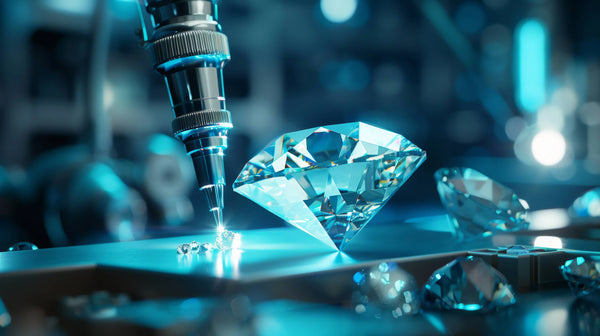Lab Diamonds: Stunning, Ethical, and Affordable

Known for their beauty, ethical sourcing, and cost-effectiveness, they have challenged traditional diamonds, which are typically mined from the earth. These diamonds, created in controlled laboratory environments, replicate the natural processes that form diamonds beneath the earth’s surface but do so without the environmental and social consequences often associated with mining. This shift has made lab-grown diamonds a popular alternative for consumers who want a stunning and ethical piece of jewelry at a more affordable price.
The Beauty of Lab Diamonds
At first glance, a lab grown diamond looks nearly identical to a mined diamond. They possess the same physical properties, including brilliance, fire, and scintillation, which refer to how the diamond reflects light. Lab diamonds are made of carbon atoms that are arranged in a crystal structure, just like natural diamonds. The only difference lies in the creation process: lab grown diamonds are produced in a laboratory using one of two methods: High Pressure High Temperature (HPHT) or Chemical Vapor Deposition (CVD).
In the HPHT method, carbon is subjected to extreme heat and pressure to simulate the conditions under which natural diamonds form in the earth’s mantle. The CVD process, on the other hand, involves introducing carbon-rich gas into a chamber and using heat to break the gas molecules apart. This creates carbon atoms that crystallize into a diamond structure. Both methods result in diamonds that are chemically, physically, and optically identical to mined diamonds. Whether it’s a ring, necklace, or earrings, a lab diamond will sparkle just as beautifully as any mined counterpart.
Ethical Benefits of Lab Diamonds
One of the most compelling reasons why consumers are turning to lab diamonds is the ethical concerns surrounding traditional diamond mining. Mining for natural diamonds has long been associated with environmental degradation, human rights violations, and exploitation of workers, particularly in regions where regulations are lax. In contrast, lab-grown diamonds are produced in controlled environments, significantly reducing the environmental impact. There is no need for mining, which often leads to habitat destruction, soil erosion, and water contamination.
Lab-grown diamonds also ensure that no unethical labor practices are involved in their production. Many diamond mines operate in regions where workers, including children, are subjected to dangerous working conditions with little pay. Lab diamonds, however, are made in modern facilities with safe working conditions, ethical labor standards, and minimal impact on surrounding communities. For those who care about social responsibility, lab-grown diamonds provide a clear advantage over traditional mining practices.
Affordability of Lab Diamonds
In addition to their beauty and ethical benefits, lab grown diamonds are more affordable than their mined counterparts. The price difference can be substantial, often up to 30-40% less for a lab diamond of the same size and quality as a natural diamond. The reason for this price disparity lies in the supply chain. Lab diamonds do not require the extensive costs associated with mining, such as excavation, transportation, and sorting. Furthermore, they can be produced in a relatively short time compared to the millions of years it takes for natural diamonds to form.
This affordability allows consumers to invest in a larger or higher-quality diamond without the steep price tag that usually accompanies mined diamonds. Whether you are looking for an engagement ring or a special gift, lab grown diamonds offer a way to get the same stunning appearance without compromising on quality or ethical standards.
Environmental Sustainability
Another aspect that makes lab grown diamonds more appealing is their reduced environmental footprint. The diamond mining industry has been criticized for its significant environmental toll, including the destruction of ecosystems and pollution of waterways. Large-scale mining operations often leave behind barren landscapes and disrupt local wildlife habitats. In contrast, lab grown diamonds are produced in energy-efficient labs with a much smaller environmental footprint. Many companies in the industry are also making efforts to use renewable energy sources in their production process, further enhancing the sustainability of lab diamonds.
Consumers can rest assured that their purchase of a lab diamond is contributing to a more sustainable and responsible jewelry industry. With an increasing number of companies prioritizing eco-friendly practices, lab grown diamonds are poised to become a key player in the growing movement toward environmental sustainability in the fashion and luxury goods industries.
Conclusion
Lab diamonds represent the future of fine jewelry offering beauty, ethical integrity, and affordability in a way that traditional mined diamonds simply cannot. Their stunning appearance, identical physical properties, and ethical production processes make them an attractive choice for consumers who want a high-quality diamond without the environmental or social concerns associated with mining. As awareness of their benefits continues to grow, lab grown diamonds are likely to become an even more integral part of the jewelry market.




